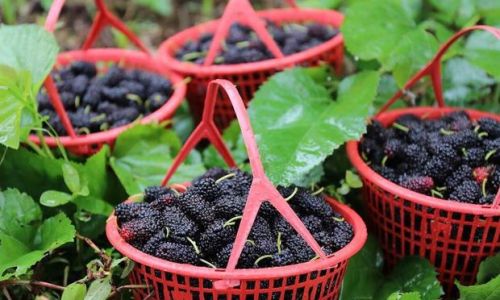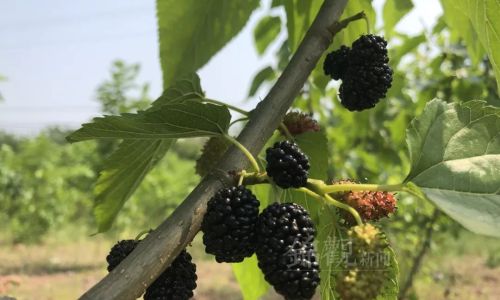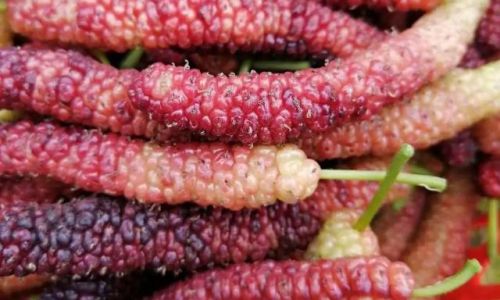Introduction
Mulberries, those sweet and juicy fruits of the Morus genus, have been cherished for millennia across various cultures for their unique flavor, nutritional benefits, and medicinal properties. From the ancient silk roads where mulberry trees were cultivated to feed silkworms, to modern-day orchards where these fruits are relished by humans, the history and significance of mulberries are intertwined with human civilization. Among the various species, the black mulberry (Morus nigra) and the red mulberry (Morus rubra) are particularly renowned for their rich taste and deep color. However, enjoying these delightful fruits necessitates mastering the art of mulberry harvesting. This article delves into the techniques, traditions, and considerations involved in the meticulous process of picking mulberries, ensuring that both the fruit and the tree remain healthy and productive.
Understanding the Mulberry Tree

Before diving into the harvesting methods, it’s crucial to understand the biology and growth habits of mulberry trees. Mulberry trees are generally fast-growing, deciduous shrubs or small trees that thrive in a variety of soil types and climates. They are known for their long, drooping branches that bear clusters of fruits. The timing of fruit ripening varies by species and location, typically occurring between late spring and early autumn.
Mulberries ripen unevenly within the same cluster, with some fruits reaching maturity earlier than others. This characteristic requires patience and careful selection during harvesting to avoid picking underripe or overripe fruits. Additionally, mulberry trees have a tendency to produce fruit on both new and old wood, meaning that pruning strategies play a vital role in optimizing fruit production.
Preparing for Harvest
Before embarking on a mulberry-harvesting expedition, several preparations are essential to ensure a successful and enjoyable experience. First and foremost, it’s crucial to dress appropriately. Mulberry trees often grow in sunny, open areas, so wearing protective clothing such as long sleeves, gloves, and a wide-brimmed hat can shield you from sunburn and scratches. Additionally, wearing light-colored clothing can help you spot any fruit stains or drips more easily.
Bringing the right tools is equally important. A sturdy ladder, if needed to reach higher branches, should be securely placed and checked for stability. A pair of sharp pruning shears is invaluable for trimming overgrown branches or removing damaged fruit. A large, soft-sided basket or bag is ideal for collecting mulberries, as it protects the fruits from bruising and allows for easy transport.
Harvesting Techniques

The core of mulberry harvesting lies in gentle, selective picking. Here are some key techniques to follow:
-
Selective Picking: As mentioned, mulberries ripen at different rates within the same cluster. To ensure you’re harvesting only ripe fruits, gently pull or twist each mulberry individually. A ripe mulberry should come off the stem easily without leaving much of the fruit behind. Avoid shaking branches or pulling entire clusters, as this can damage the tree and lead to premature fruit drop.
-
Timing is Key: Harvest mulberries when they are fully ripe but still firm. Overripe fruits are prone to bruising and can attract pests and diseases. If you’re unsure about the ripeness, taste-test a few fruits from different parts of the tree.
-
Gentle Handling: Mulberries are delicate and can easily be bruised or squashed. Handle them with care, placing them gently in your basket or bag. Avoid stacking them too high or compressing them, as this can damage the fruit and reduce its shelf life.
-
Pruning for Future Harvests: While harvesting, take note of the tree’s structure and prune away any dead, diseased, or crossing branches. This not only improves air circulation and reduces the risk of disease but also encourages new growth and fruit production. Pruning should be done in late winter or early spring, before the tree begins its active growth phase.
-
Frequency of Harvesting: How often you harvest depends on the tree’s productivity and your personal needs. Regularly picking ripe fruits encourages the tree to produce more, as it signals to the plant that its resources are being utilized. However, avoid stripping the tree completely, leaving some fruits on the branches to attract birds and other wildlife, which can help with natural pollination.

Preserving the Harvest
Once you’ve gathered your bounty, preserving mulberries can extend their enjoyment beyond the short harvest season. Here are a few methods:
-
Refrigeration: Fresh mulberries can be stored in the refrigerator for a few days. Place them in a single layer on a paper towel-lined container to absorb excess moisture and prevent molding.
-
Freezing: For longer-term storage, mulberries can be frozen. Wash and dry them thoroughly, then spread them out on a baking sheet in a single layer and freeze until solid. Once frozen, transfer them to an airtight container or freezer bag. Frozen mulberries are perfect for smoothies, baking, or making jam.
-
Drying: Dried mulberries are a nutritious snack that can be enjoyed year-round. Use a food dehydrator or oven set to a very low temperature. Spread the fruits out in a single layer and dry them until they are pliable but not brittle. Store dried mulberries in an airtight container in a cool, dark place.
-
Jam and Jelly Making: Mulberries make delicious jams and jellies. Follow a standard recipe for fruit jam or jelly, substituting mulberries for the primary fruit. The natural pectin in mulberries may require less added pectin than some other fruits.

Cultural Significance and Traditions
Beyond their culinary value, mulberries hold significant cultural and symbolic meanings across different societies. In China, mulberries are associated with longevity and fertility, often featured in traditional medicine and folklore. In India, they are revered as a symbol of wisdom and knowledge, with the ancient practice of feeding mulberries to scholars to enhance their mental clarity.
In many regions, mulberry harvesting is a communal activity that brings families and friends together. It’s a time to share stories, enjoy the fruits of nature’s bounty, and celebrate the simple joys of life. As you embark on your mulberry-harvesting journey, consider incorporating these traditions into your experience, making it not just a task but a meaningful connection with nature and your community.
Conclusion
Harvesting mulberries is a delightful and rewarding endeavor that combines skill, patience, and a deep appreciation for nature’s bounty. By following the techniques outlined in this article, you can ensure that your mulberry harvest is both abundant and sustainable. Moreover, preserving and sharing your harvest allows you to extend the joy of these sweet fruits beyond the fleeting harvest season, embedding them into your culinary traditions and memories. As you gather under the mulberry tree, remember that each fruit is a testament to the tree’s resilience and the cycles of life, a small but significant part of our shared human heritage.




0 comments